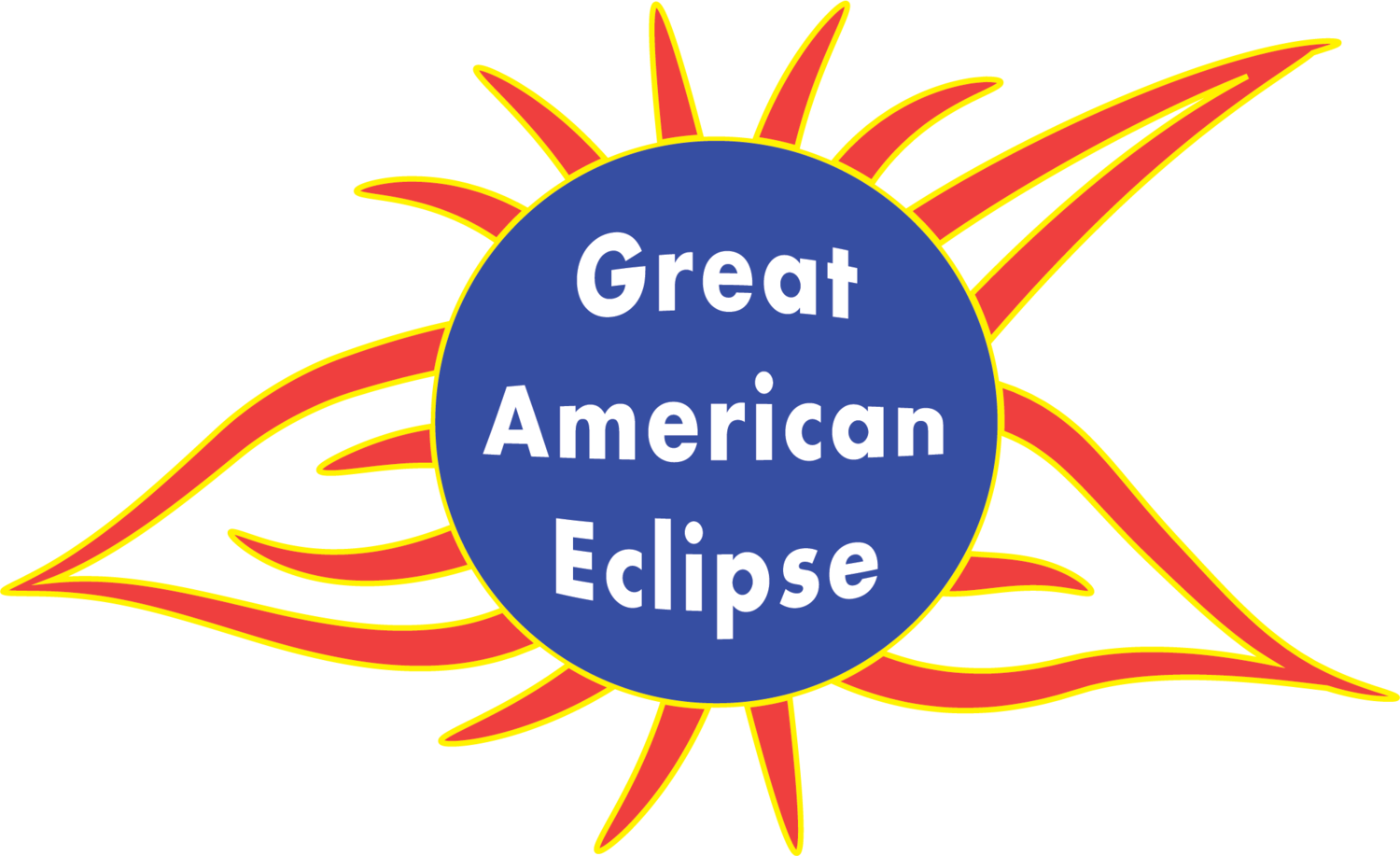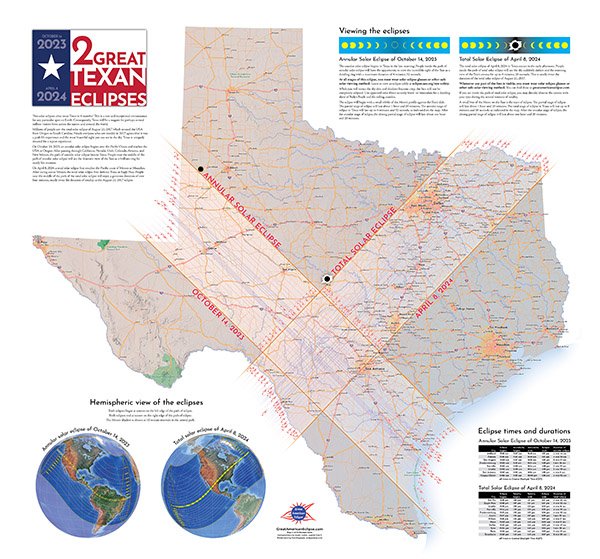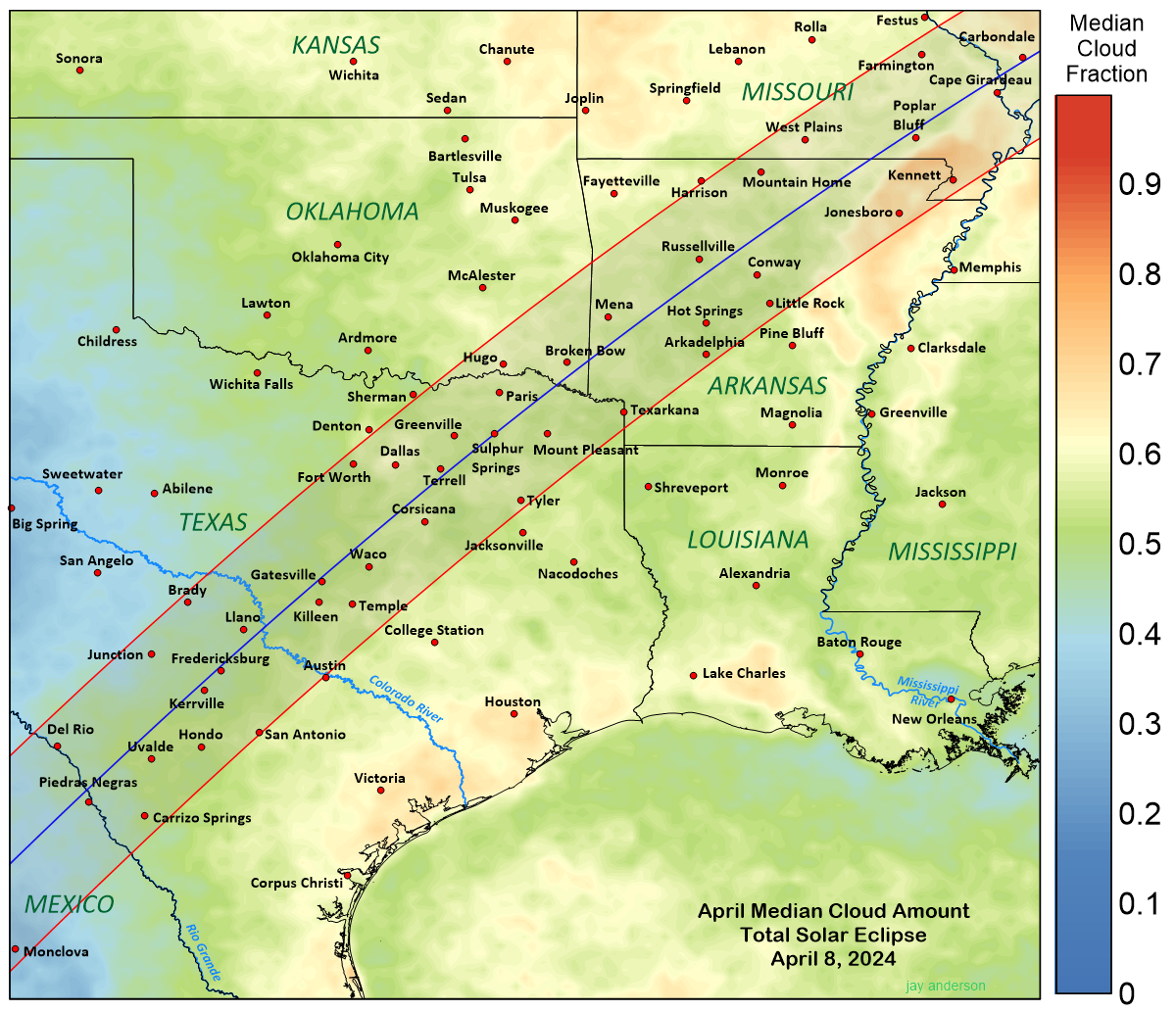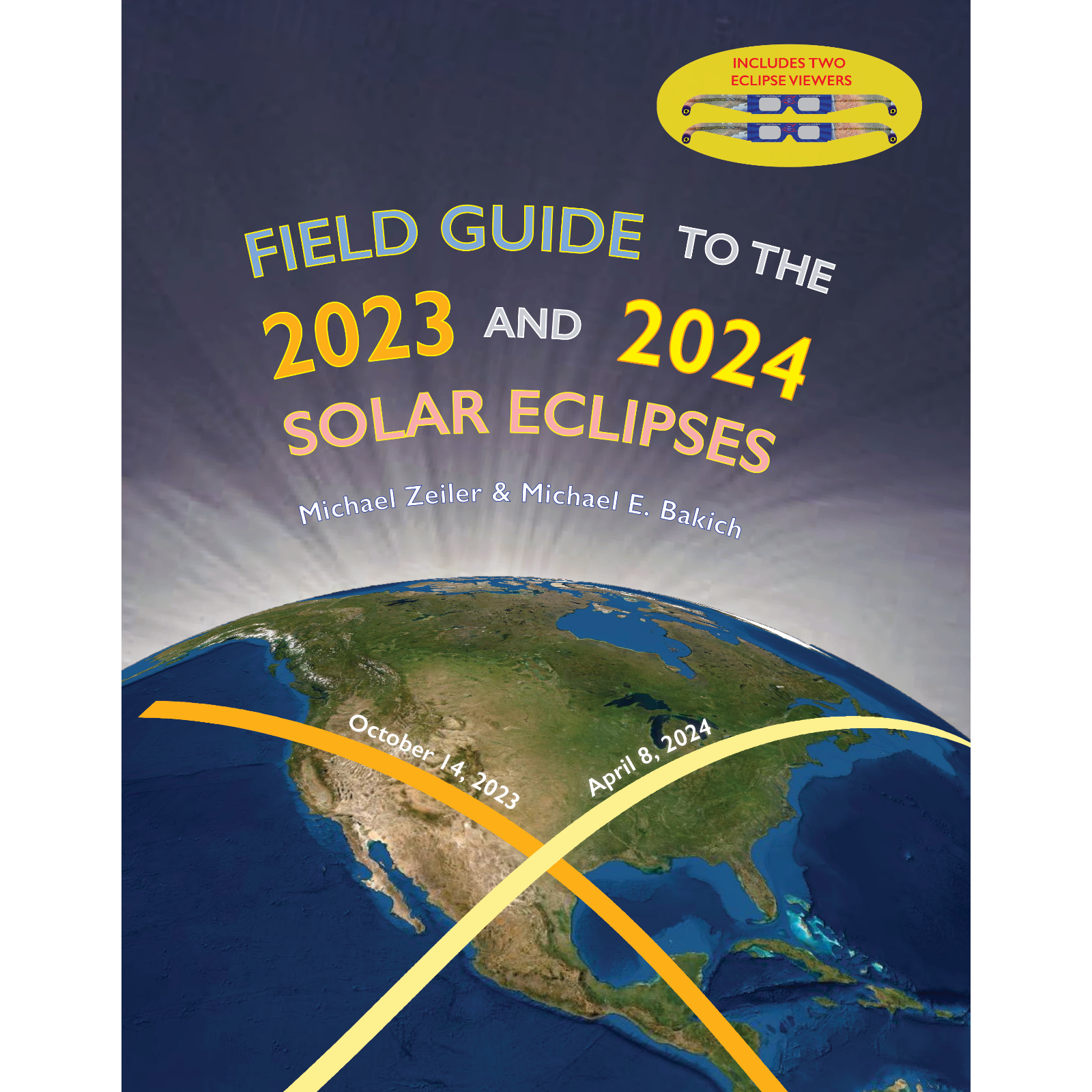Come fly with the Moon’s shadow! Everyone inside the shadow will experience the breathtaking sight of the Sun’s corona during the total solar eclipse of April 8, 2024.
This animation simulates a view of the total eclipse from a spacecraft 100 miles high, chasing the shadow along its arc.
Total Solar Eclipse over Texas on April 8, 2024
This map is available at www.greatamericaneclipse.com/eclipse-maps-and-globe/texas-2024-state-map
Texas will be an amazing destination for the total solar eclipse! Be prepared to see the greatest sight nature offers, a total eclipse of the Sun. Be sure to get inside the path of totality for the full experience.
Simply put, a total eclipse of the Sun is the most beautiful sight you will ever see in the sky. Nothing can prepare you for the amazing sight when the sky suddenly darkens and the Sun’s corona shines in the sky. No photograph can capture the stunning beauty of a total solar eclipse, you must see it for yourself. Learn about the basics of the solar eclipse at greatamericaneclipse.com/basics and find out more about the wonder of eclipses at greatamericaneclipse.com/splendor. Find your copy of this map here.
Texas boasts the best weather forecast along the path in April, and has an excellent highway system and abundant accommodations in Dallas, Ft Worth, Austin, and San Antonio. Some cities with long durations of totality include Eagle Pass, Uvalde, Kerrville, Fredericksburg, Llano, Lampasas, Killeen, Waco, Sulphur Springs, and the southeastern suburbs of Dallas.
A remarkable fact is that the entire metropolitan area of Dallas and Fort Worth, a megalopolis of 7 million people, is entirely inside the path of totality! In fact, 12 million people in Texas reside within the path of totality, by far the largest of any state in the US.
For eclipse viewing, mobility is essential especially in case of inclement weather. Within Texas, Interstate 10 from Junction to San Antonio is within the path and offers quick relocation if clouds threaten. The long stretch of Interstate 35 from Austin to Waco to Fort Worth and Dallas will be a key route for many eclipse chasers, an ideal traffic corridor if relocation is needed.
A major eclipse viewing event will be held in Waco, Texas on eclipse day that is hosted by the Lowell Observatory, Discovery Channel, Baylor University, and the city of Waco. Find out more at eclipseovertexas2024.com.
The total solar eclipse first enters Texas at the international border at 1:27 pm CDT leaves Texas at the Oklahoma and Arkansas borders at 1:49 pm CDT. Through Texas, the speed of the Moon’s shadow will accelerate from about 1580 miles per hour to about 1850 miles per hour.
Tips for viewing the eclipse
Get your eclipse glasses early! They will sell out in the weeks before eclipse day. We offer eclipse glasses which are ISO 12312-2 certified and made in the USA at www.greatamericaneclipse.com/eclipse-viewing/eclipse-viewing-glasses
Learn the simple methods to safely view a solar eclipse. Visit eclipse.aas.org/eye-safety for detailed instructions.
Plan ahead. If you choose to stay in a hotel, be aware that most will sell out. A perfect guide to planning your eclipse is our field guide, greatamericaneclipse.com/books/field-guide-to-the-2023-and-2024-solar-eclipses.
Get to your destination early and try to spend eclipse night at or near your viewing location. Expect the highways and freeways to be extra busy in the aftermath of totality.
Be self-sufficient. Fill up your gas tank and bring food and water.
Check the local TV weather reports as eclipse day approaches. The meteorologists will give you great advice on viewing the eclipse and whether you may need to relocate. We recommend eclipsophile.com as the essential site for eclipse meteorology.
Unless you are an experienced photographer, we recommend that you not attempt photography during the eclipse. You will be so stunned that it will be difficult to operate a camera. If you choose to do photography, visit Fred Espenak’s MrEclipse.com for advice.
Animation of the Moon’s shadow
Our animation shows you exactly where the eclipse will be total, moment-by-moment. The maximum duration shown is for locations along the very center of the eclipse path. This animation is built using data from retired NASA astrophysicist Fred Espenak (eclipsewise.com) and eclipse expert Xavier Jubier (xjubier.free.fr). You may freely share our maps and animations on social media and web sites, we just ask for a link to our website.
Eclipse weather in Texas
Courtesy of eclipsophile.com
The essential eclipse weather website eclipsophile.com says that the best prospects in the United States are in Texas. Further, “The best of Texas weather prospects—in fact, the best prospects in the United States and Canada—lies on the Edwards Plateau, where median cloud amounts are as much as 15 percent lower than those south of the centre line on the Coastal Plain. We can be even more specific: according to the satellite data, the best climatological prospects lie between Junction and Brady, both in Texas.”
Our advice is to stack your odds by paying attention to short-term weather forecasts and if poor weather is forecast, jump in your car very early on eclipse day (or the evening before) and drive either to the southwest or northeast to chase after clear skies. You will never regret the effort to seek out a clear view of a total eclipse of the Sun, it will register in your memory all your life.
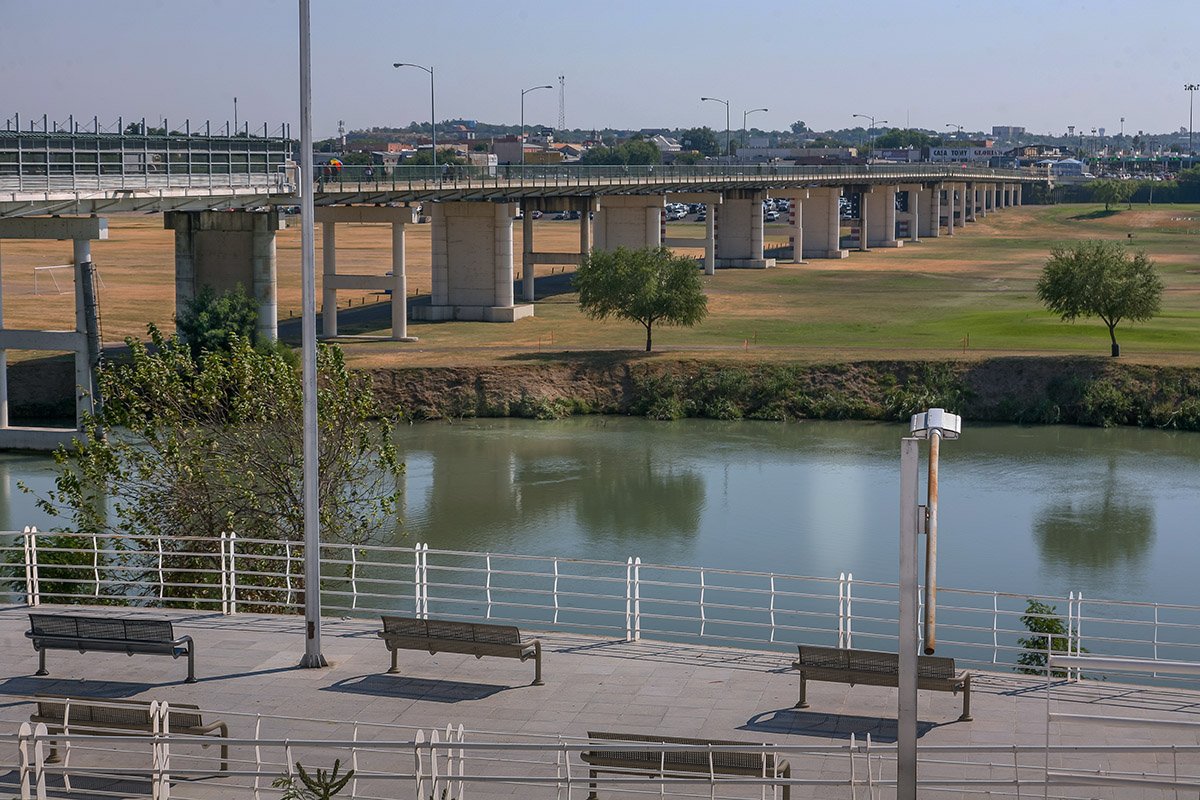


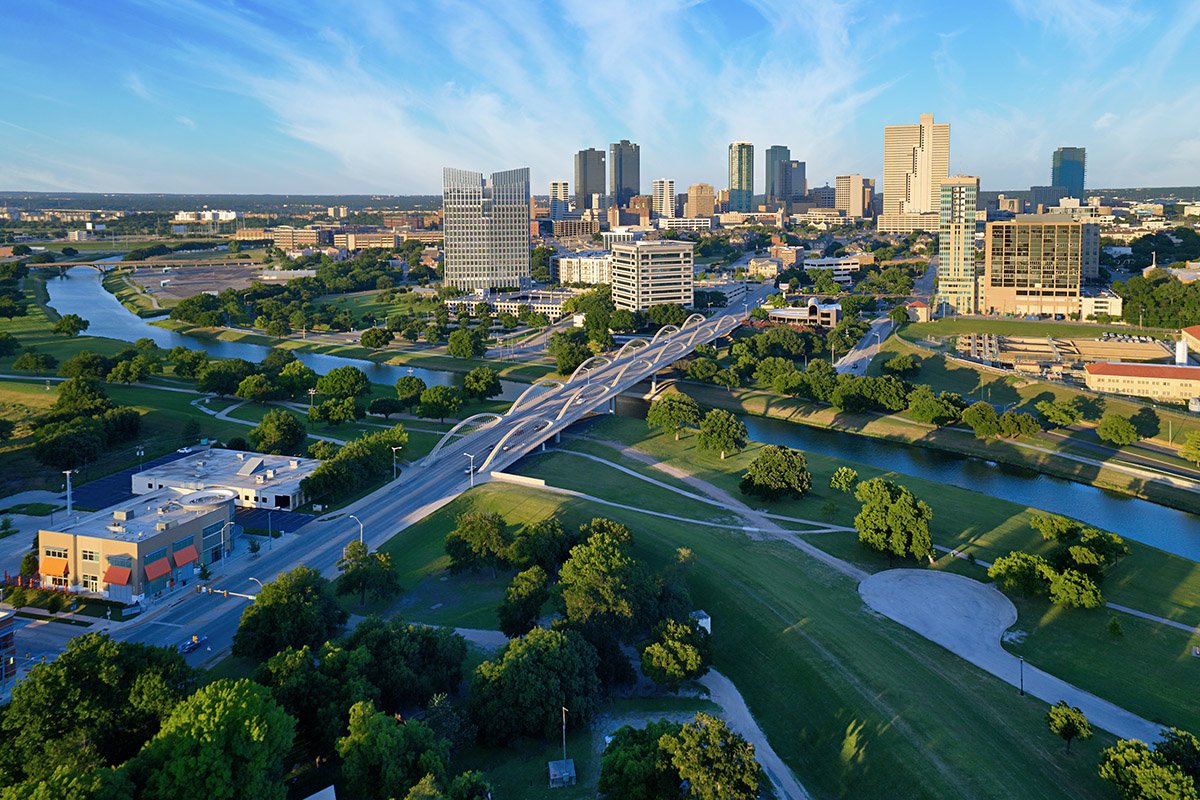
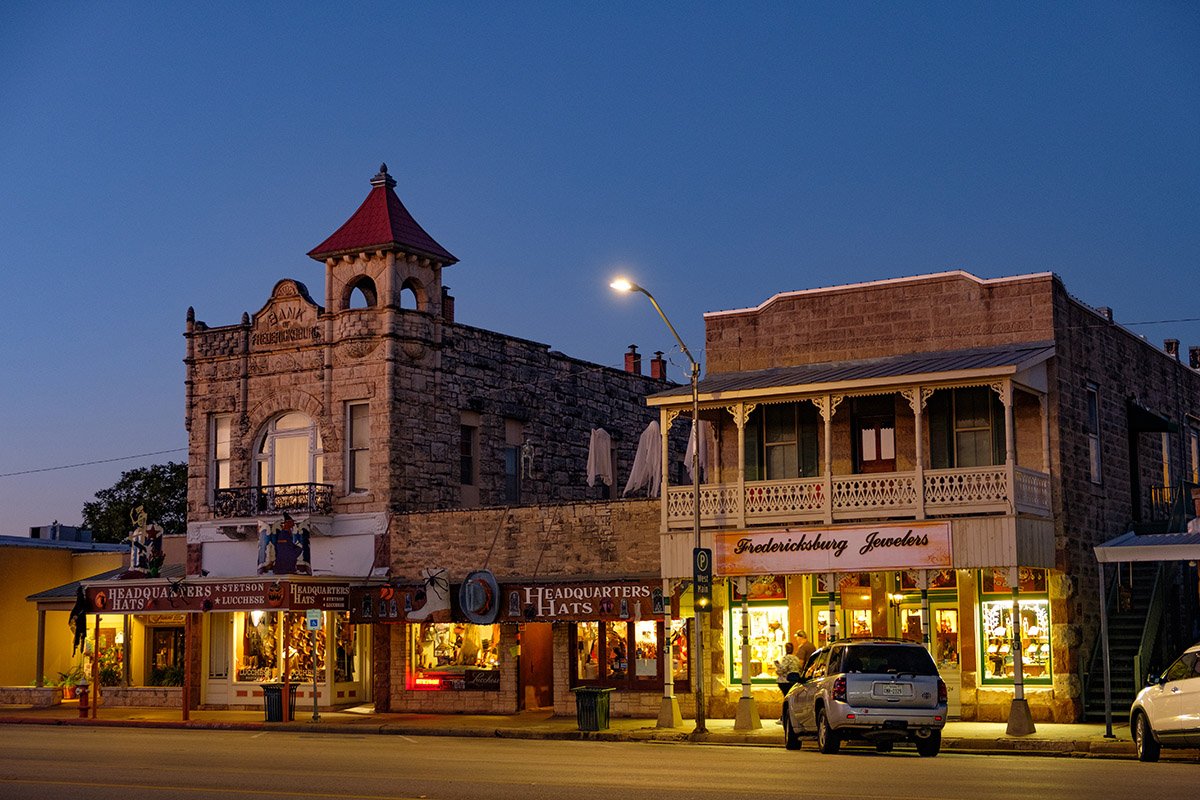

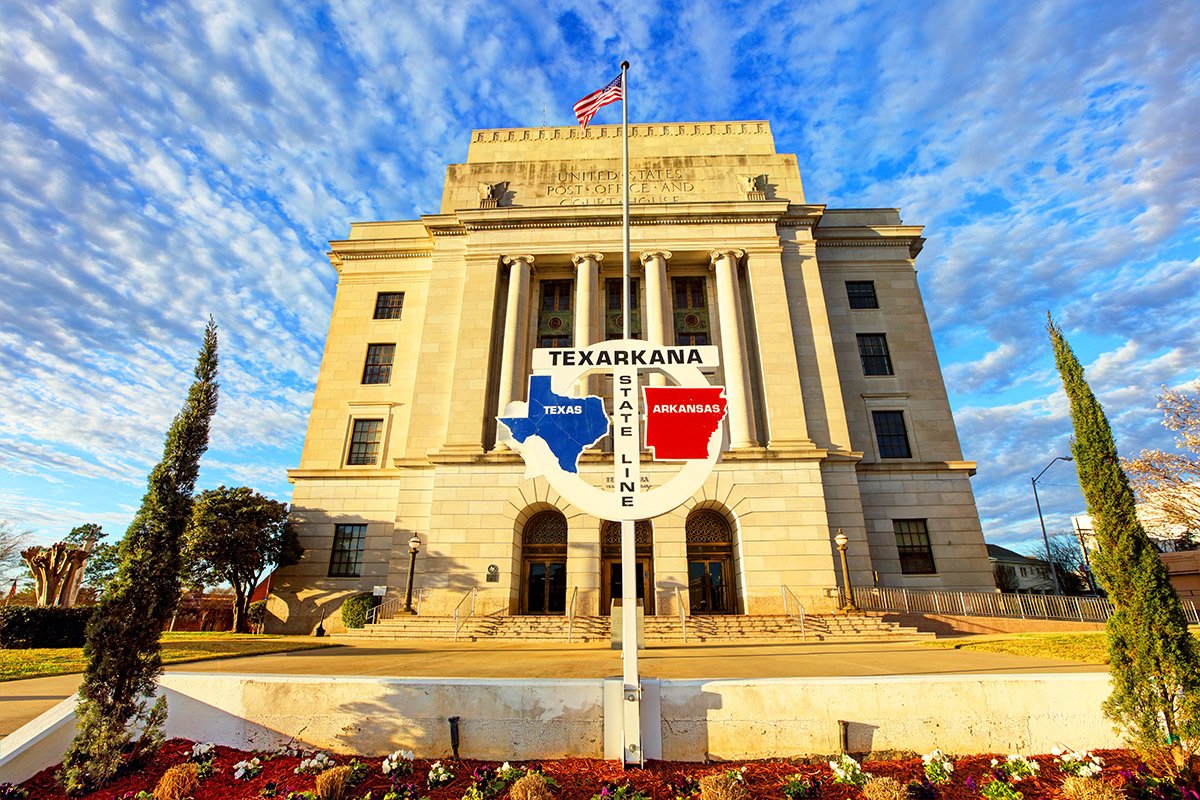

How many people will come to Texas see the eclipse?
As the total solar eclipse in 2017 proved, the eclipse will be a magnet for millions of people across the nation. We’ve analyzed population distributions and the national road network and present our rough estimate of how many people will come to Texas for the eclipse. Learn more about our methodology at greatamericaneclipse.com/statistics.
Additional resources for the Texas eclipse
These are websites with additional information on the eclipse in Texas. If you would like your website to be on this list, email us at media@greatamericaneclipse.com
explorescientificusa.com/products/crossroads-of-the-eclipses-expeditions
eclipseovertexas2024.com
www.hillcountryalliance.org/eclipse/
www.uta.edu/planetarium/eclipse
www.hmns.org/home/eclipse-2024-texas-totality-at-lonehollow-ranch/
www.waxahachiecvb.com/p/tools/total-eclipse-of-the-heart
copperascove.com/2024-solar-eclipse/
www.visitmckinney.com/solareclipsemckinney/
www.visitgranbury.com/eclipse/
www.eventcreate.com/e/thesunfestival
www.fredericksburg-texas.com/solar-eclipse
www.uvaldecountysolareclipse.com
www.navarrocollege.edu/planetarium/solar-eclipse-2024.html
www.kerrvilletexascvb.com/p/things-to-do/eclipse-2024
www.junctiontexas.com/junction-tx-annular-and-total-solar-eclipses
